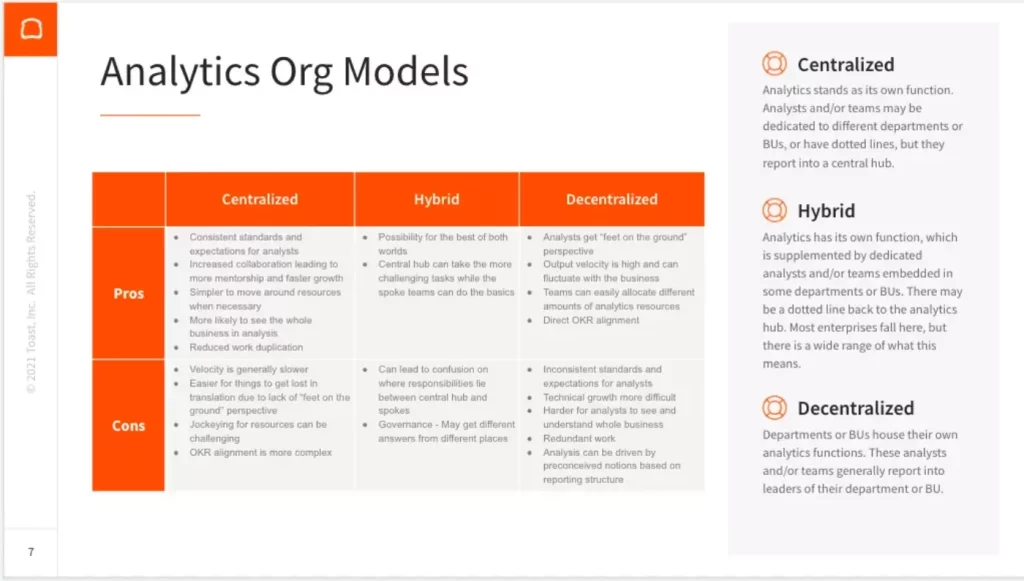
Metadata
- Author: Monte Carlo Data
- Full Title:: How to Choose the Right Structure for Your Data Team
- Category:: 🗞️Articles
- Document Tags:: data team topologies,
- URL:: https://www.montecarlodata.com/blog-how-to-choose-the-right-structure-for-your-data-team/
- Finished date:: 2023-06-30
Highlights
The centralized data team couldn’t keep up with the demands of the entire fast-growing, data-obsessed organization (View Highlight)
Eventually small pockets of analytics opened up in other parts of the company, like sales and customer success,” Greg said. “Mostly because our small team just couldn’t meet the needs of the growing business. And so they started their own teams, and that kind of worked!” (View Highlight)
Dedicated analysts working in their business units still maintained a close connection with Greg’s core analytics team, giving Toast a hybrid between a fully centralized and fully decentralized data team structure (View Highlight)
problems began to arise from this hybrid model. Data consistency was one concern. “There were various degrees of rigor across the organization when it comes to what constitutes good data. When you’re small, you’re scrappy, you’re growing, and any data is better than no data. But eventually, we reached a scale where we knew that inaccurate data could be harmful.” (View Highlight)
This con can be solved with the chapter
As the business got bigger and more complicated, you need analysts to start seeing the whole business,” said Greg. “Even in a decentralized model you need to ensure analysts work in close collaboration with other analysts and technical leaders when it comes to setting the standards around performance and operability.” (View Highlight)
- Hire data generalists, not specialists—with one exception (View Highlight)
data engineers are the one exception. After you hire a few analysts, your first data engineer should follow close behind.” (View Highlight)
- Overcommunication is key to change management (View Highlight)
If you have analysts reporting into business leaders, make sure that they’re empowered to push back based on the data they are seeing,” said Greg (View Highlight)
- Don’t overvalue a “single source of truth” (View Highlight)
as long as you have directional observability into data trust (i.e., is this table up to date? Do I know who owns this data set? Why did 50 rows turn into 500?), the need for a “single source of truth” isn’t as pressing. (View Highlight)
Data is always messy and rarely perfect. You’ll get more done if you prioritize having an end-to-end view of data health and accuracy over more granular control. (View Highlight)
 (
(